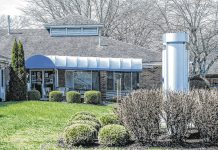The Bartholomew County Commissioners are considering whether to add a second list of road improvement projects to their plans this year.
Bartholomew County did receive the maximum $1 million allowed annually through the state’s Community Crossings matching grant program for county road overlay work. This year’s list includes East 25th Street, from Talley Road east to State Road 9. The over five-mile route is an exceptionally long overlay that leaves considerably less money for other projects.
County government often pays for road work with money obtained from Community Crossings, as well as funds collected through the County Economic Development Income Tax (CEDIT).
County Commissioner Larry Kleinhenz says the $16.25 million awarded to Bartholomew County government through the federal ‘American Rescue Plan’ (ARP) contains several million that can be used for discretionary spending.
“ARP funding left us in a position where we’ve utilized much of those (federal covid relief funds) to do projects that we would have paid for with our CEDIT funds,” Kleinhenz said. “We are now in a position where we can put some more money into our roads. Taxpayers recognize the problem. Most of the complaints I get are about roads.”
Kleinhenz says he and his two fellow commissioners, Tony London and Carl Lienhoop, have been talking about expanding the overlay program for the past six months. All three commissioners voiced their support for such an expansion that is expected to cost between $800,000 to $1 million.
Inflation and labor shortages have meant the county has to pay more money for repaving fewer miles of road. For example, an investment of $2.24 million this year will only provide new asphalt to 16.6 miles of rural roads.
“We’re looking at spending $110,000 a mile,” county highway engineer Danny Hollander said. “We were at $50,000 a mile about six years go.”
The decision on which sections of road will receive a new blacktop begins with a personal inspection of all county roads in early spring by Bartholomew County Highway Superintendent Dwight Smith.
The superintendent prioritizes his list of areas most in need of repairs before handing it over to Hollander, who determines how many of Smith’s proposed projects can be done with the available money. There are still a number of proposed projects suggested by Smith that didn’t make the current overlay list, Hollander said.
If the county highway department doesn’t use federal or state grant money, they will have considerably more control of the road improvements. For example, the county can choose a low bidder for each individual project.
Community Crossings requires local units of government receiving their grant money to hire only one contractor to take care of all overlay projects.
Creating an additional list of overlay projects will require obtaining bid specifications for the segments that can be done for the available funds, determining if new culverts need to be installed, and removing the berms on either side of the project areas before putting down new asphalt, County Commissioner Carl Lienhoop said.
But since the commissioners are not sure at this time if they will add overlay projects, no specific areas for roadwork have been discussed so far.





